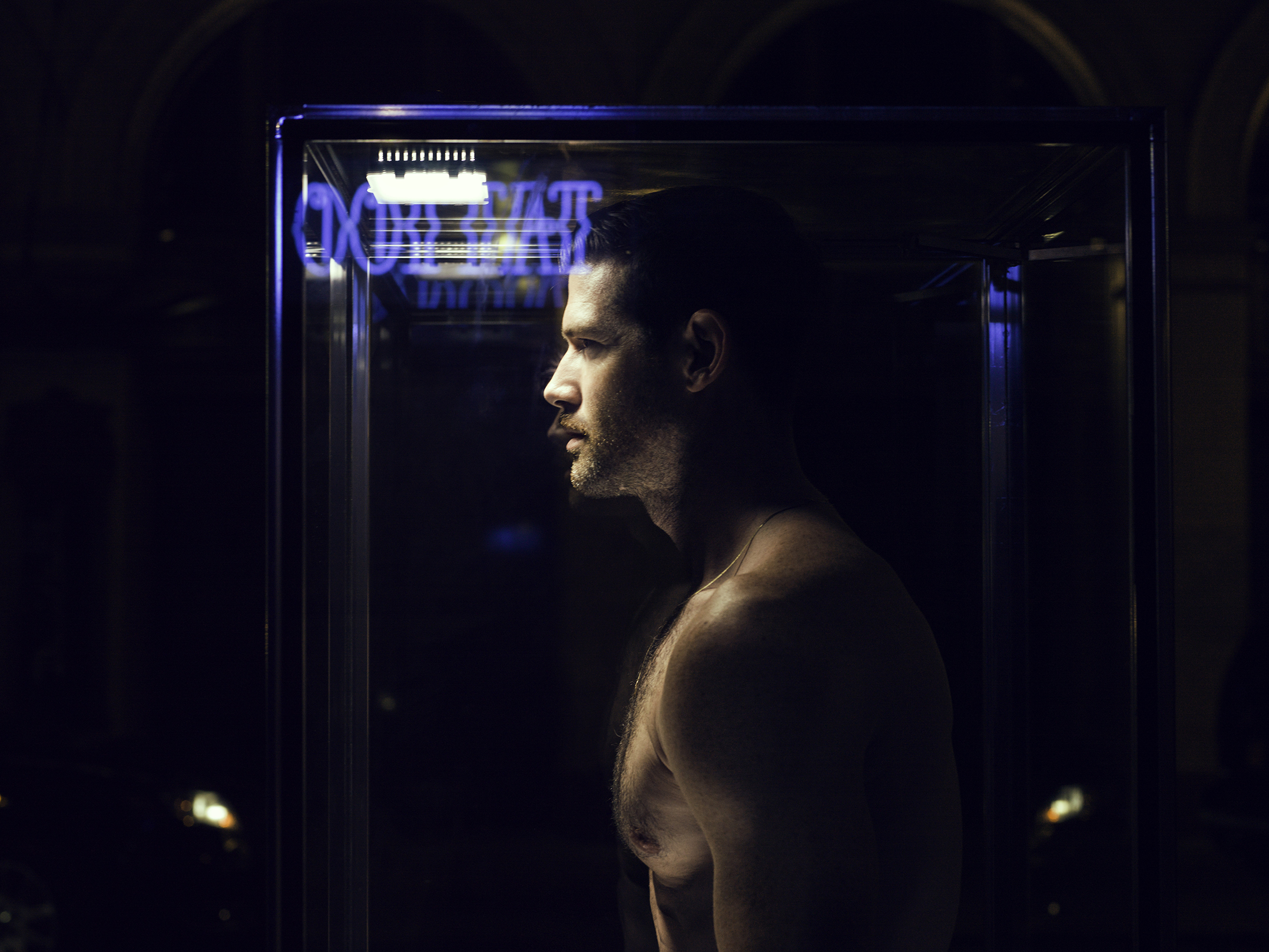
PHOTOGRAPHY BY LEVI JACKMAN FOSTER
The photographer Levi Jackman Foster talks “Follow”
Challenging a new generation of young gay trailblazers to recognize the power of a collective
Queer artist Levi Jackman Foster’s first solo exhibition, Follow, at Lytehouse Studio directly addresses a new generation of young gay men who have used objectification and validation-seeking practices as a means of gaining a following on social media. Foster’s approach was not one of judgment, but instead mirrored the awareness of living in a world where a gay man’s relevance is often measured by their likes or followers — beckoning us to examine whether we are fostering positive gay identities or reinforcing negative stereotypes.
The artist’s Mormon upbringing, and subsequent rejection of the faith, was evident in the evocative work — bottles of poppers encased in a row, lined the entrance — juxtaposing the forbidden with innate sexual desire. With the hope of reflecting a generation’s need to “curate their lives to meet surreal social standards,” images of chiseled men in glassed structures were disassociated from their environments as Foster chose to immerse his subjects in rural or urban settings. In a separate room, spectators were invited to step into a glass structure and draw their own conclusions.
A portal-like experience in which spectator and art collide, the exhibition pondered the question, “Where do we go from here?” Foster has admittedly used social media as a powerful tool to evoke his audience with images celebrating sexuality and individuality. Recognizing the obvious advantages of connecting to each other on a social platform, Foster reminded us to maintain a sense of perspective through the often, overwhelming bombardment of information we receive via the internet.
Follow challenges a new generation of young gay trailblazers to recognize the power of a collective and step out of socially constructed comfort zones. Foster was kind enough to sit down with me and answer some questions I had about the show, revealing his personal thoughts concerning the new work.




What inspired you to create Follow? I created Follow as a reaction to a dramatic behavioral shift in young men’s use of social media. Over the past few years, we’ve watched young men, myself included, going to astonishing lengths to gain adoration from seemingly anonymous people online. In this exhibition, I want to show the transformation of social norms concerning the modern man in 2017. Personal experiences of religious fraternity, self-objectification and isolation guided my perspective in creating these works.
What role does objectification play in this exhibition? Men have objectified themselves for millennia, it’s just much more apparent now that we have social media as a vehicle to put ourselves out there and satisfy our primitive urges. Sex sells and being perceived as a sexy/beautiful/handsome object is an almost guaranteed immediate surge of praise-induced self-worth.
How do we steer ourselves from the need for validation seeking? I believe needs are based upon the individual and it would be insensitive for me to assume other peoples’ needs. We are a social species and all seek forms of validation, but there are different kinds and ways of acquiring it. For instance, I typically find the validation I gain from my art to hold more weight than someone telling me they find me attractive — although both can feel good in an instant.
Are these inclinations reinforcing negative stereotypes within our community? I would counter that these inclinations are ubiquitous throughout society. We all participate in this in one way or another. However, if viewing our community from a commercial perspective, our “influencers” are undeniably homogenized.
Why is it so important for us to recognize these behaviors? I think we should all strive to cultivate our individuality and understand its value regardless of the number of likes or comments it gets on social media.
What are some of the factors that are driving these inclinations? I think the democratic inclinations of social media are slowly carving out space and a platform for marginalized people. In this new frontier of a more equal opportunity of expression, men are stepping outside their assumed behavioral roles in society to secure new forms of validation that society inherently gave them just by the nature of their gender and skin color. In the show I use my own life as an analogy to express this.
Having grown up Mormon in a paternally dominant society, being a man gave me even more clearly defined privileges than mainstream society. Leaving the safety of Mormonism to pursue a more honest life according to my sexual orientation left a void that social media, in moments, seemed to fill. At times I felt like I was gaining the praise I deserved. A follow, a like, a comment all could cause the same hormonal reactions as the fraternal approval I had sought in my Mormon upbringing.
How do we, as gay men, foster a more positive sense of identity within our community? Look to the queer generations before us for their bravery and authenticity. Also go on your Instagram feed right now and if you find monotony, shirtless or not, consider changing up who you follow. Maybe follow someone you don’t understand.



